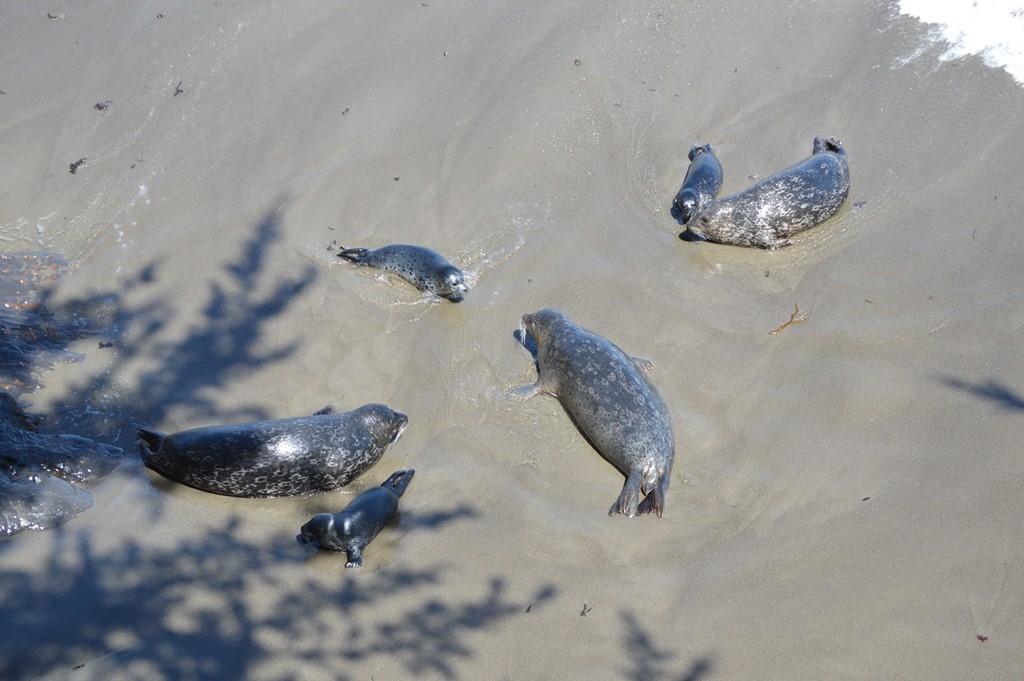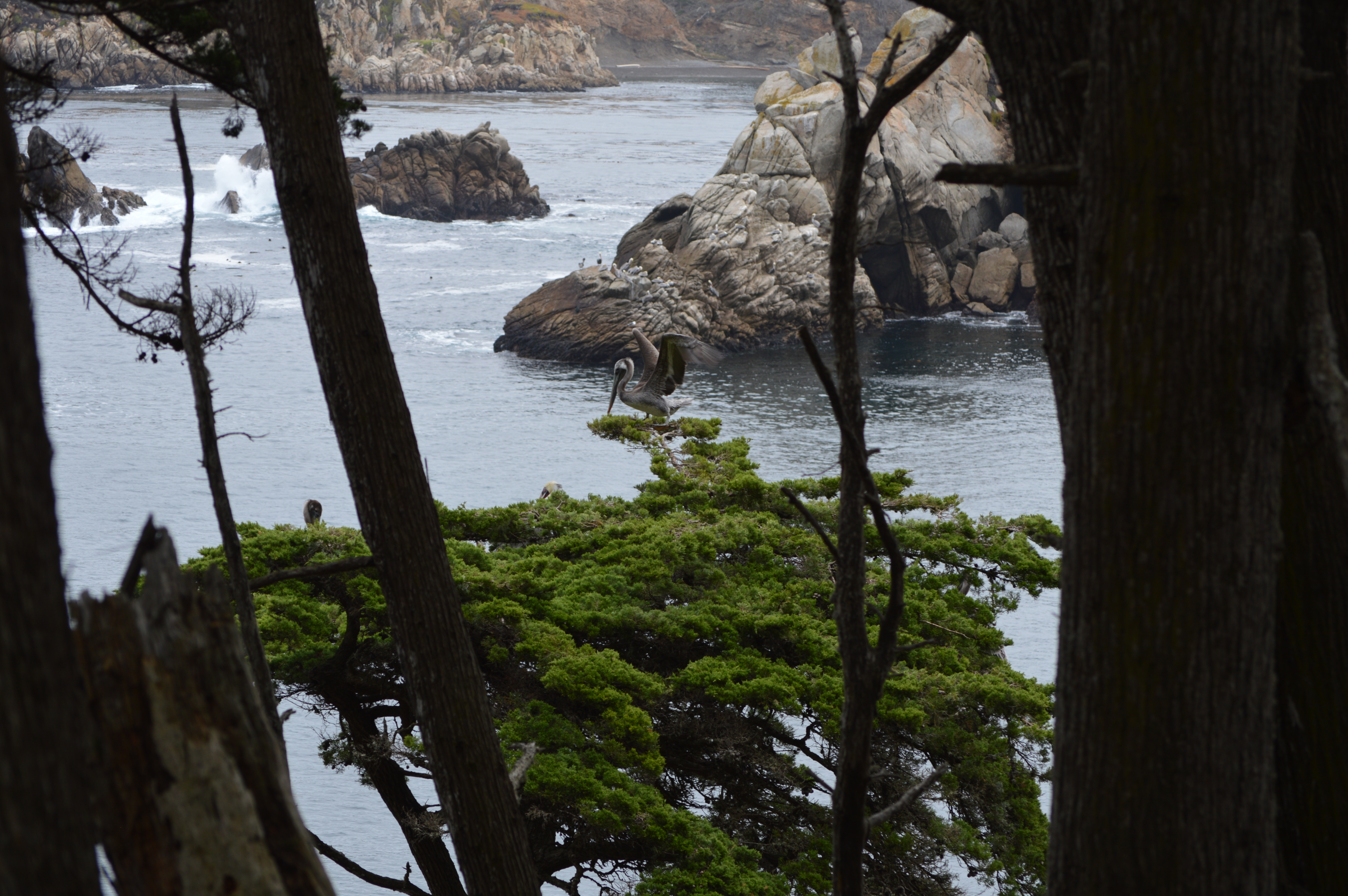Gray whale migration is swimming south this January past the Monterey Peninsula of California’s Central Coast. I walked from Highway 1 into Point Lobos State Reserve around 11:40am and after a little more than a mile walk through the Monterey pine forest, reached the ocean view around 12 noon. In sight of the sea the urge to yell ‘Thar she blows’ somehow seemed appropriate, but not my style and not really appropriate to the location of Point Lobos where the solemnity of feeling a connection with the natural environment surrounding you does not accommodate loud outbursts of sound from humans. Sea Lion Point is the place for listening to the sound of ocean swells and barking sea lion males vocalizing from the rock islands offshore.
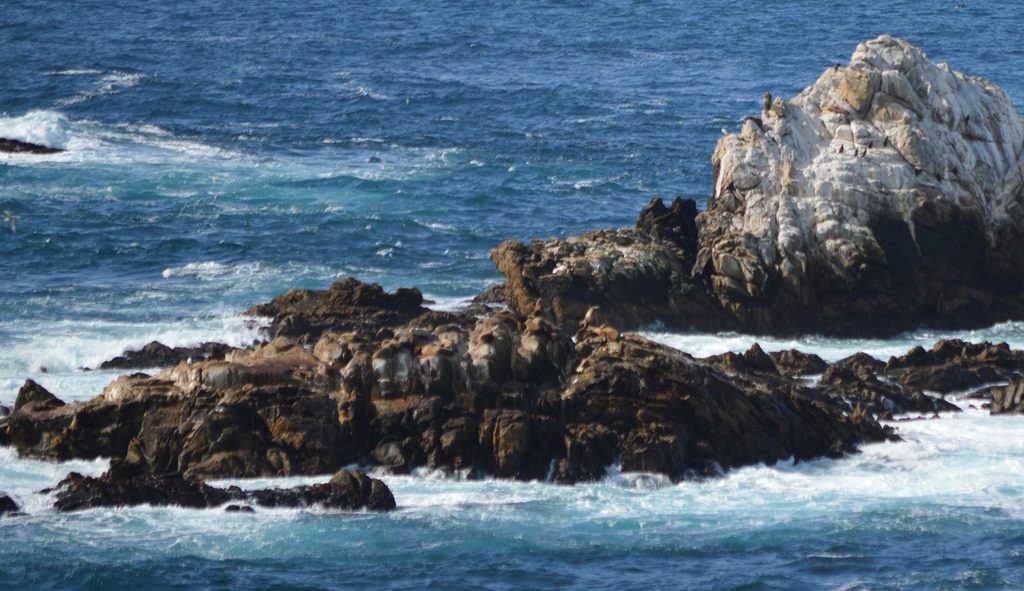
Before I walked the remaining 150 meters to the bench at Sea Lion Point, I spotted blow spray from three different whales south of the point in the distance, at least a mile away and probably more.
The Pacific Ocean is vast and migrating gray whales tend to remain in motion, often cruising 5 miles per hour and only surfacing briefly to breathe. Most whale sightings from shore are simply a recognizable blow, seen as a spray of water as their exhaled warm breath immediately condensates when it hits the cool ocean air. Snapping National Geographic quality jaw-dropping pictures with my 8-year-old Nikon camera 200mm telephoto is not to be. My eyes spot whales for over an hour in a scattered mammalian sea giants convoy swimming south to Baja.
13 whales sighted in all. Most were solo whale sightings of blow, with two pairs sighted, perhaps a mother and calf, and one pod of three whales traveling side-by-side, distinguishable by three simultaneous blows about 100 meters apart. My best photo only reveals a fountain emanating from the ocean surface and not a breathtaking view of a whale.
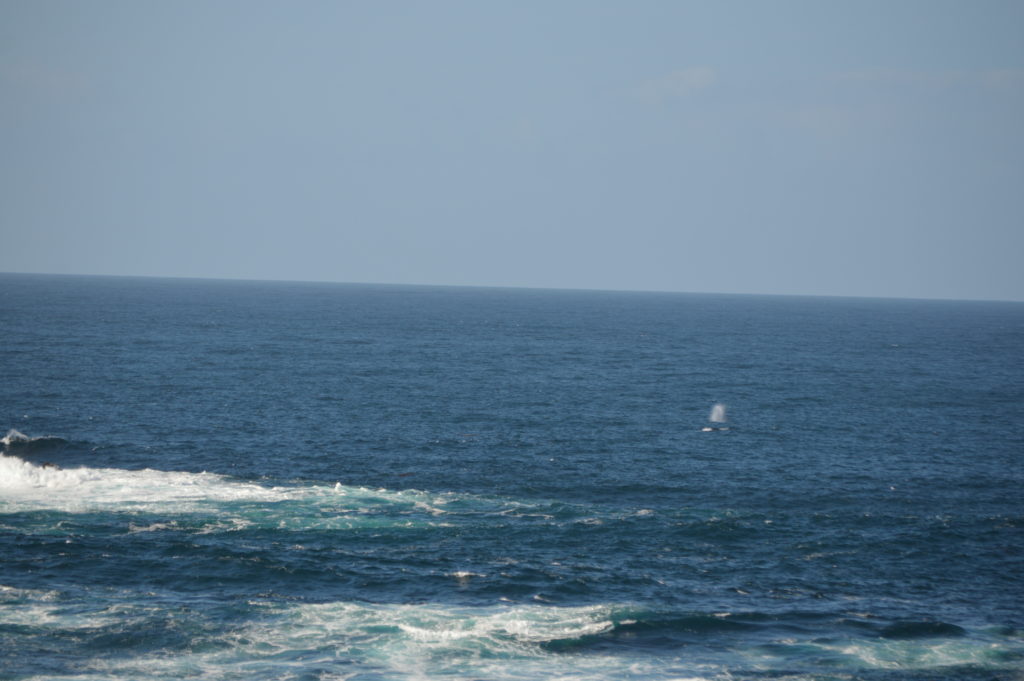
What turned out to be among my top ten ever days of whale watching from Point Lobos with 13 whales sighted by tracking blow locations over the course of 75 minutes revealed a disappointing cache of photos from my day whale spotting.
I have been thinking lately about taking another whale watching cruise on Monterey Bay.
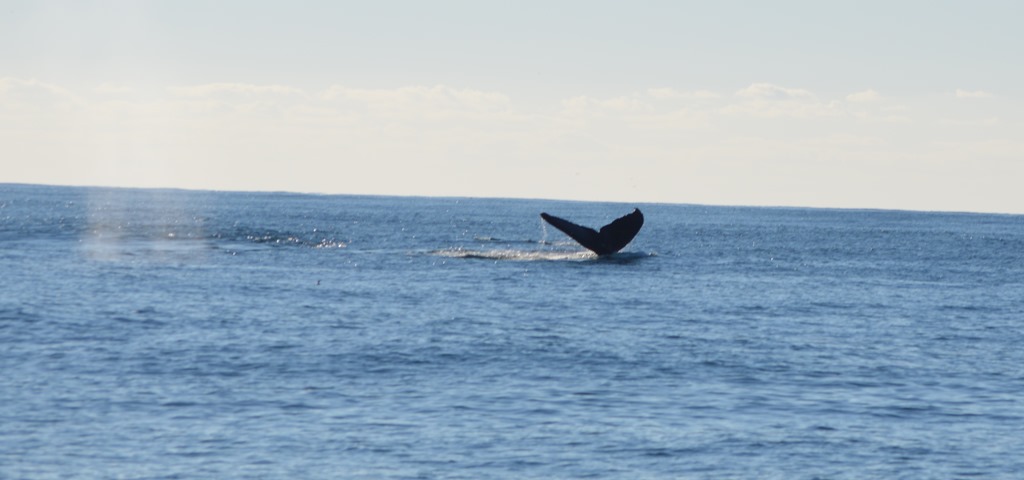

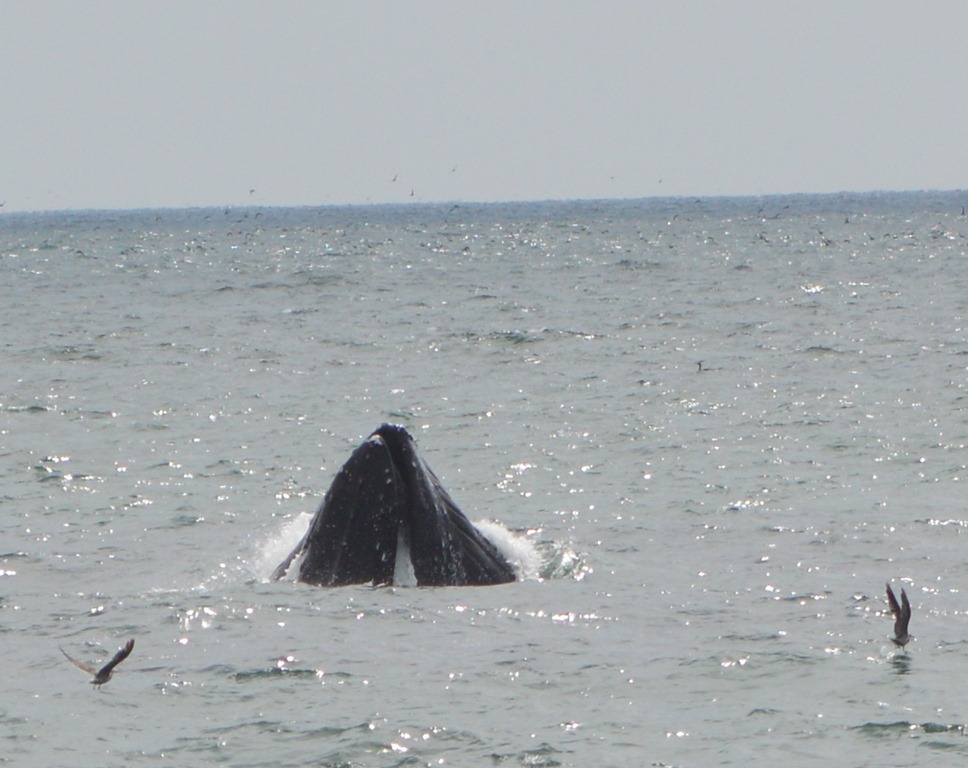
Since gray whale spotting from the coast of Point Lobos during the annual migration south is generally more of an experiential event than a photogenic event, at least with my current camera equipment, I have more detailed photos to share from a December walk around Point Lobos revealing many of the other sights to see when it is not gray whale migration season.
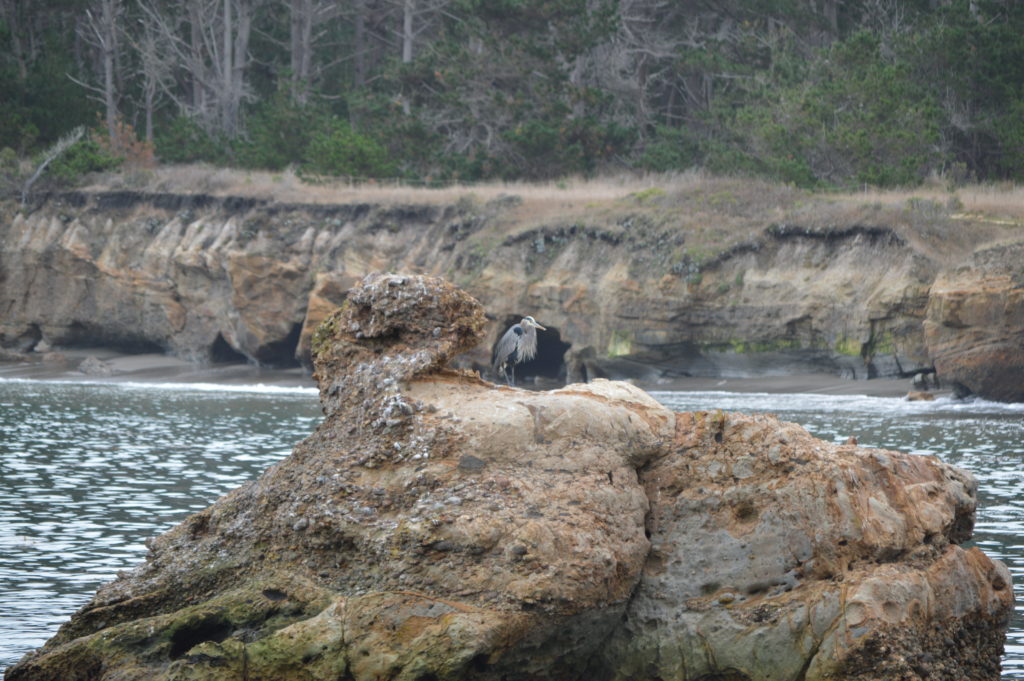
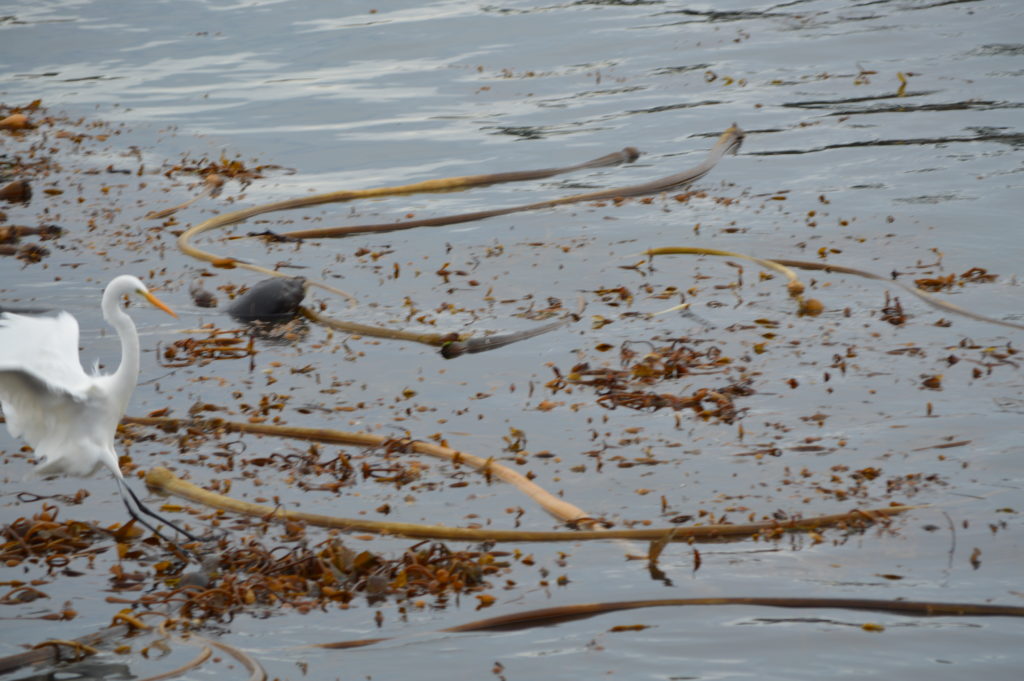
What I like about the above photo and the photo below is the harbor seal appears totally unphased by the great egret landing on the water a few feet away. Great egrets are commonly seen around Point Lobos standing on floating seaweed in calm water coves.
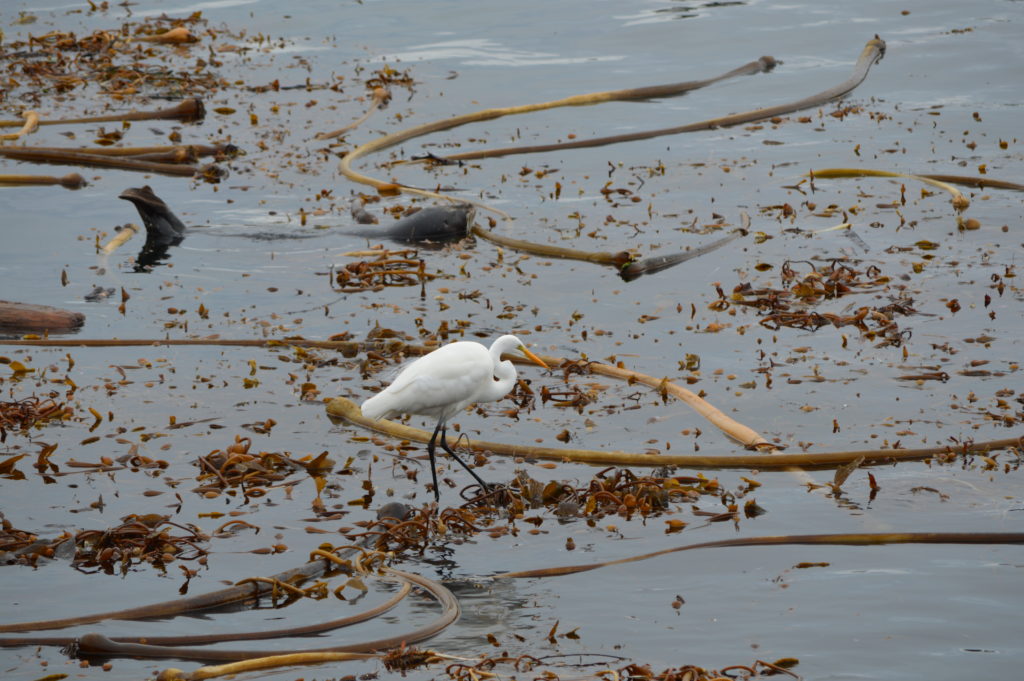
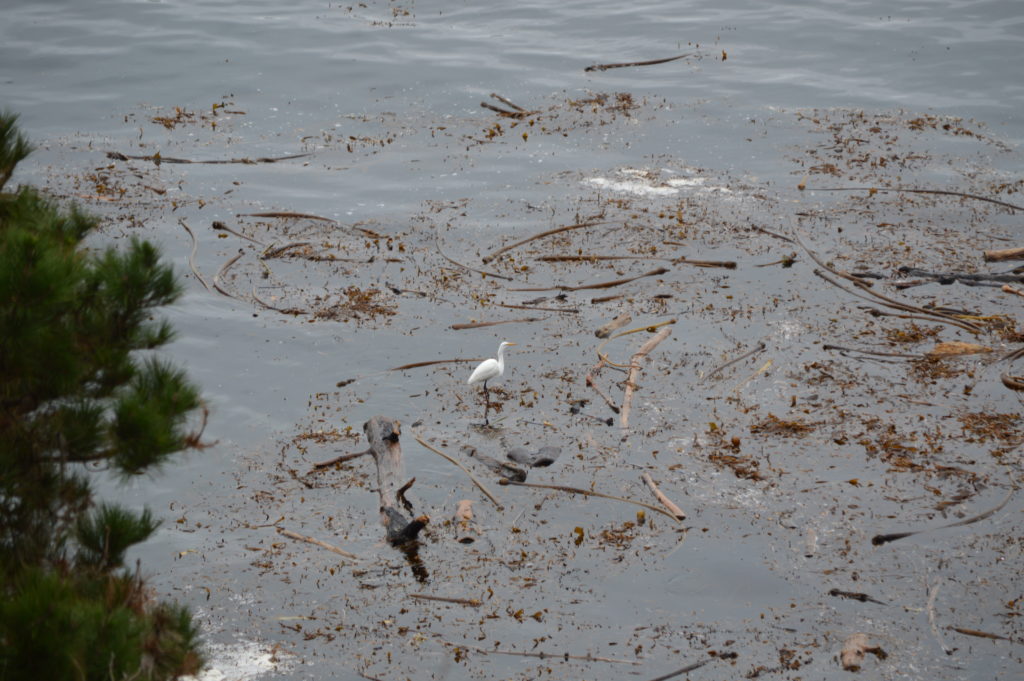
On this particular day there was an abundance of brown pelicans on the rocky outcrops.
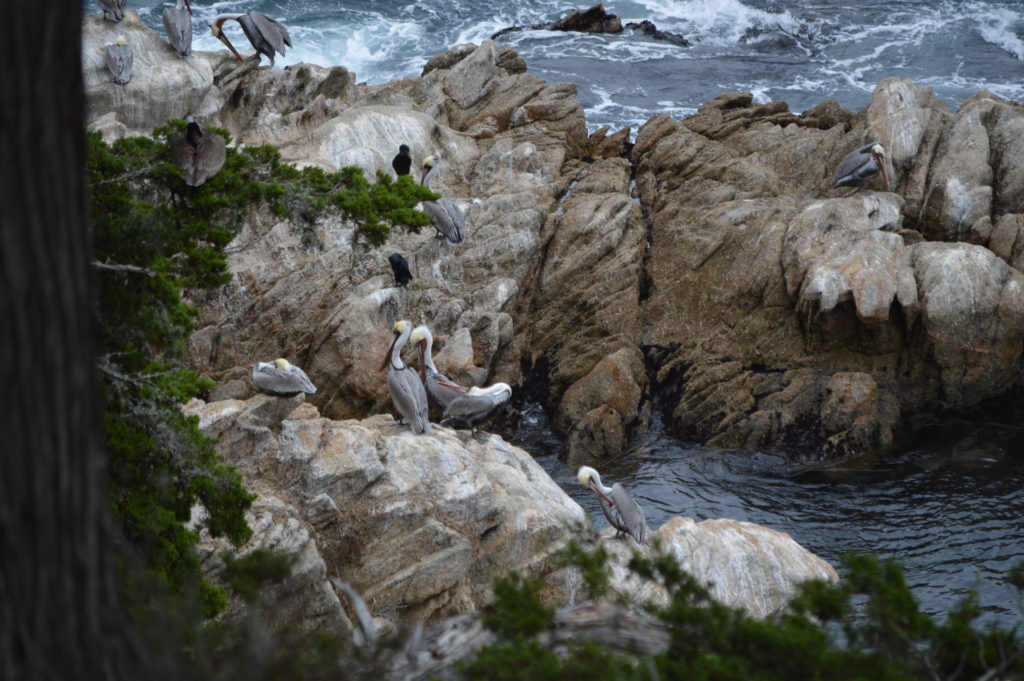
Spotting brown pelicans around Point Lobos is a given. These are my favorite birds to watch as they cruise within feet of the ocean surface or sailing by the coastal cliffs.
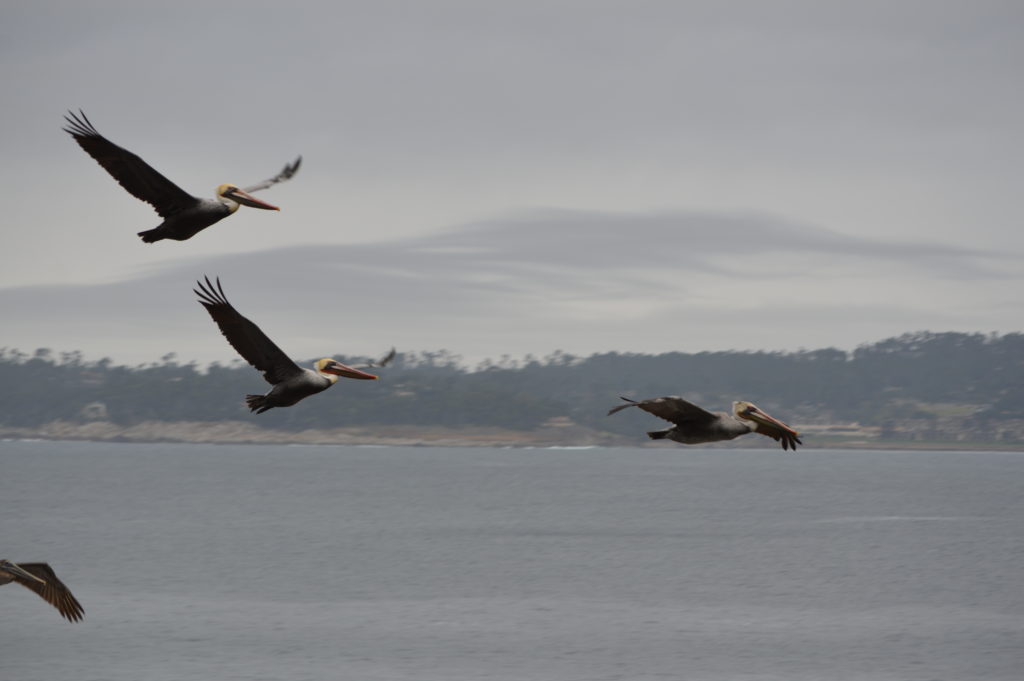
A far more uncommon place to spot brown pelicans was on the crown of a Monterey cypress tree above Bluefish Cove.
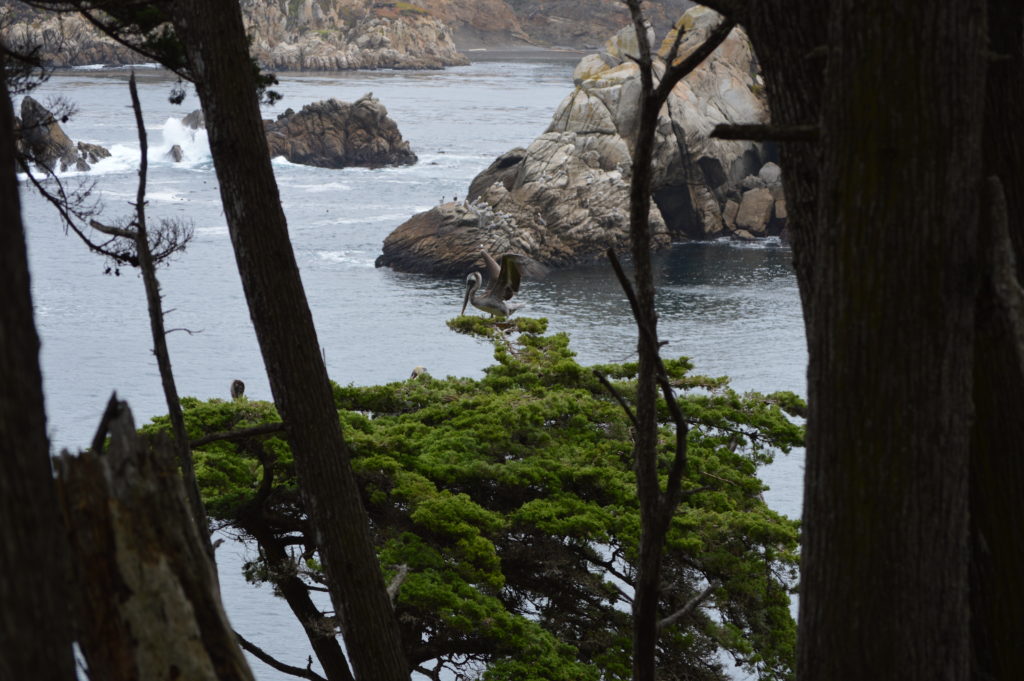
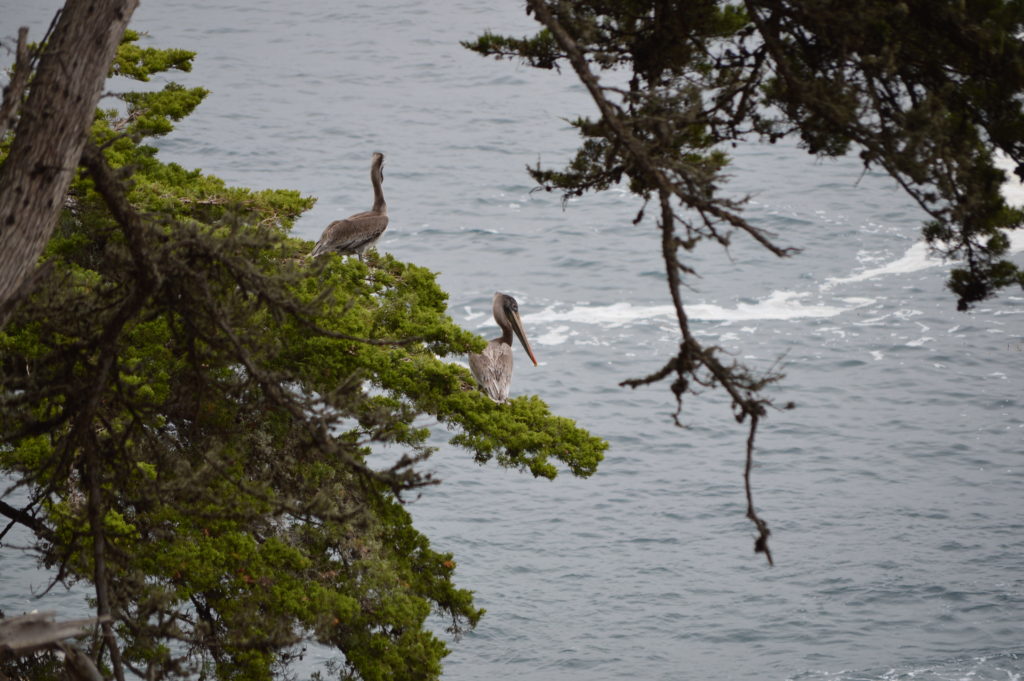
Although I did not photograph a sea otter on my December walk through Point Lobos, these furry mammals are commonly seen around the park.
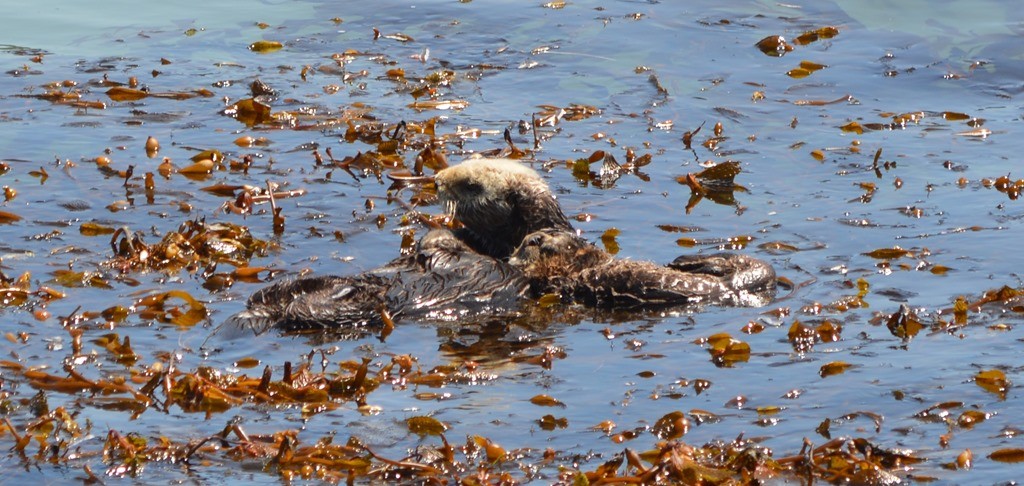
From mid-January to mid-February, gray whales can be sighted in many places from the coast of California. From shore, Point Lobos State Reserve and particularly Sea Lion Point is a good whale spotting location where gray whales tend to swim south nearby the coast when passing around the westerly sea lion rocks. Then from mid-April to mid-May, my other favorite time to visit Point Lobos, one can see and hear the harbor seal pupping season when mother seals and their pups congregate on several beaches around Point Lobos State Reserve. And with luck, one might also see gray whales and calves migrating north again to the waters of Alaska. Personally I tend to see more whales migrating south in winter each year than migrating north in spring.
